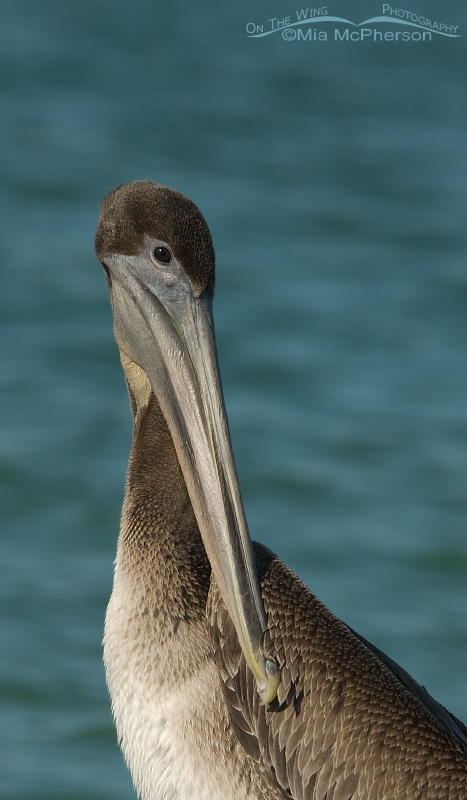 Close up of a juvenile Brown Pelican (Pelecanus occidentalis) – Nikon D200, f8, 1/640, ISO 160, Nikkor 80-400mm VR at 300mm, natural light
Close up of a juvenile Brown Pelican (Pelecanus occidentalis) – Nikon D200, f8, 1/640, ISO 160, Nikkor 80-400mm VR at 300mm, natural light
I’ve posted about American White Pelicans before so I thought I would give their “cousins”, the Brown Pelicans some coverage too. Although white and brown pelicans are similar in shape there are notable differences between the two species. Brown Pelicans are more slender than white pelicans and they are also smaller in weight, length and wingspan. Both are long-lived species, the oldest known brown pelican lived to be 43 years old according to BNA (a pay site). The color differences between white and brown pelicans are obvious.
The juvenile brown pelican above was resting on some rocks with other pelicans nearby. I think the feather patterns on the back and wings are very interesting.
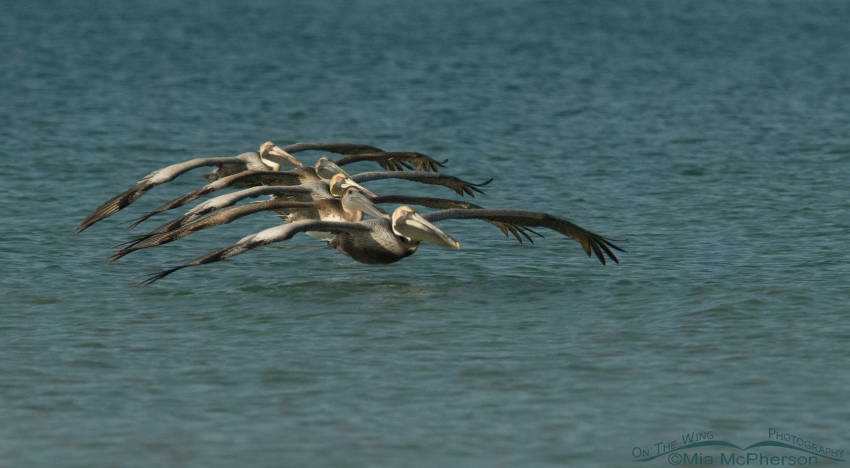 Brown Pelicans flying in formation – Nikon D200, f6.3, 1/2000, ISO 400, Nikkor 80-400mm at 310mm, natural light
Brown Pelicans flying in formation – Nikon D200, f6.3, 1/2000, ISO 400, Nikkor 80-400mm at 310mm, natural light
Flocks of brown pelicans often fly in lines or v-formations, at times they appear to be barely skimming over the surface of the water then rising up in what looks like an undulating wave then they glide back down again. When they are flying low over the water I have wondered if they ever crash into a wave but I have never seen that happen.
Brown Pelicans feed by diving head first into the water to trap fish in the pouches of their bills. I once witnessed a brown pelican dive that came back up with a small shark in it’s bill and it swallowed the shark whole! It was pretty amazing to watch but too far away to get any decent shots other than documentary images.
Usually prior to a dive the pelicans fly up then they twist their bodies & wings before they plunge towards the water. Gulls often circle around them hoping that some fish will spill out the pouch and they would be able to get a free meal without as much work.
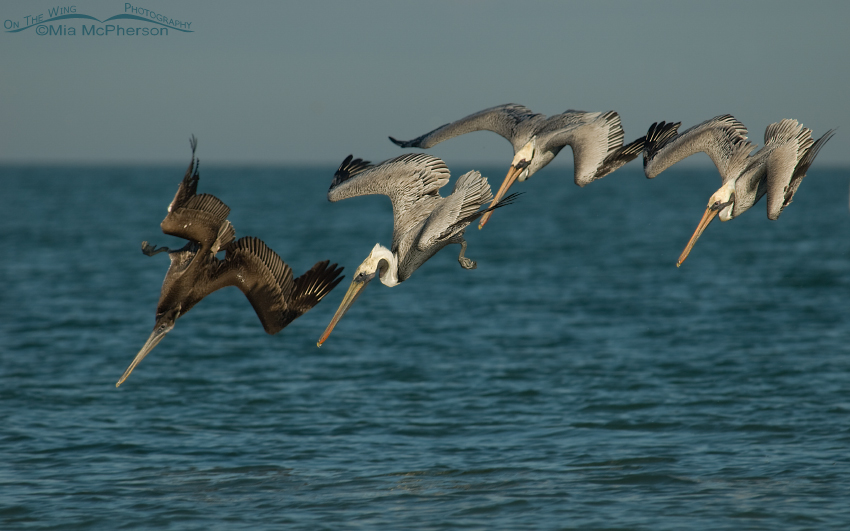 Brown Pelicans about to splash down – Nikon D200, f6.3, 1/1000, ISO 200, Nikkor 80-400MM VR at 400mm, natural light
Brown Pelicans about to splash down – Nikon D200, f6.3, 1/1000, ISO 200, Nikkor 80-400MM VR at 400mm, natural light
These spectacular dives happen extremely fast, for the image above I should have increased my ISO to gain more shutter speed because 1/1000 was almost not fast enough! The juvenile on the far left and the three adults plunged head first into the waters of the Gulf. This photo was taken in January and although the water wasn’t as warm as it is in summer I know I had been in it to photograph other birds on that day. Crazy bird photographer that I am.
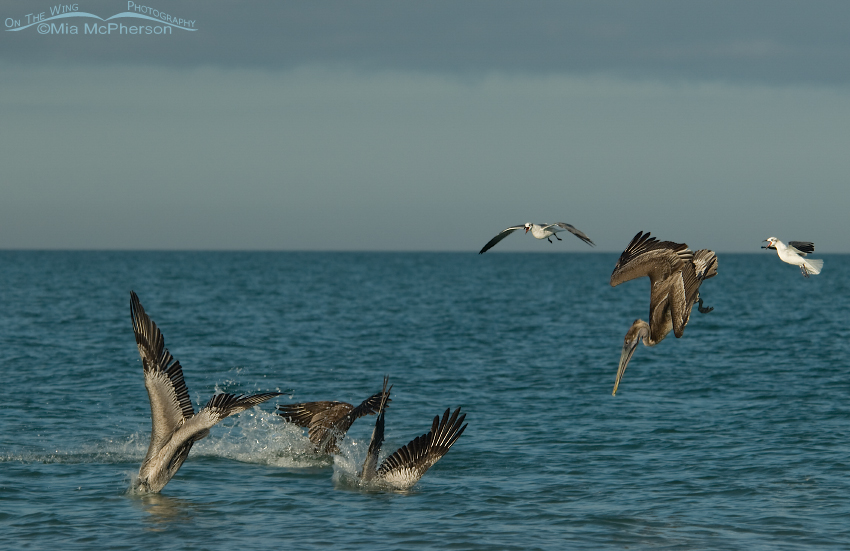 Feeding Brown Pelicans – Nikon D200, f6.3, ISO 200, Nikkor 80-400mm VR at 175mm, natural light
Feeding Brown Pelicans – Nikon D200, f6.3, ISO 200, Nikkor 80-400mm VR at 175mm, natural light
The gulls in the image above are laughing gulls.
The pelicans plunge into the water first with their bills and heads. At times most of the whole body of the bird will go under the surface of the water but just as often I have noticed that parts of the pelicans do not submerge. Good thing humans don’t feed like this or we would all be walking around with killer headaches!
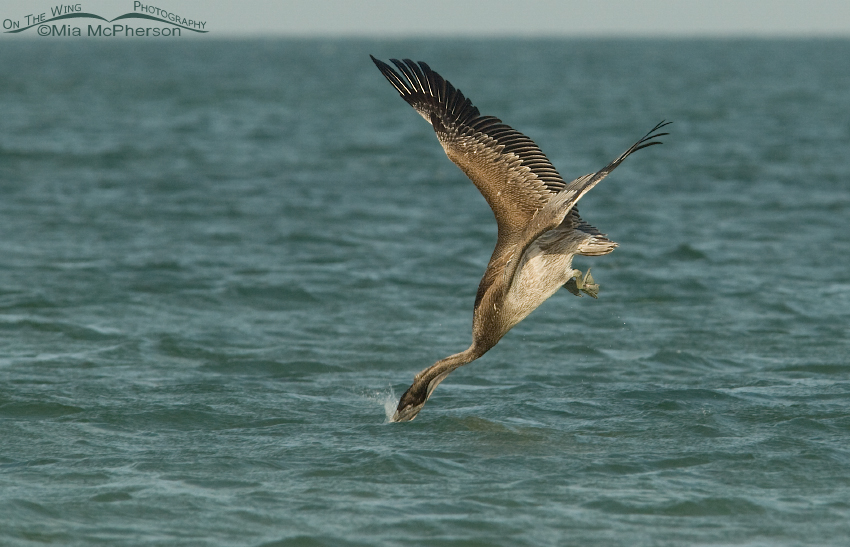 Head First! – Nikon D200, f5.6, 1/1600, ISO 400, Nikkor 80-400mm VR at 300mm, natural light
Head First! – Nikon D200, f5.6, 1/1600, ISO 400, Nikkor 80-400mm VR at 300mm, natural light
The image above was taken just after the bill cut into the water but before the head submerged, when I viewed this file full sized it appears that at this point the pelican’s nictitating membrane closes over the eye to protect it.
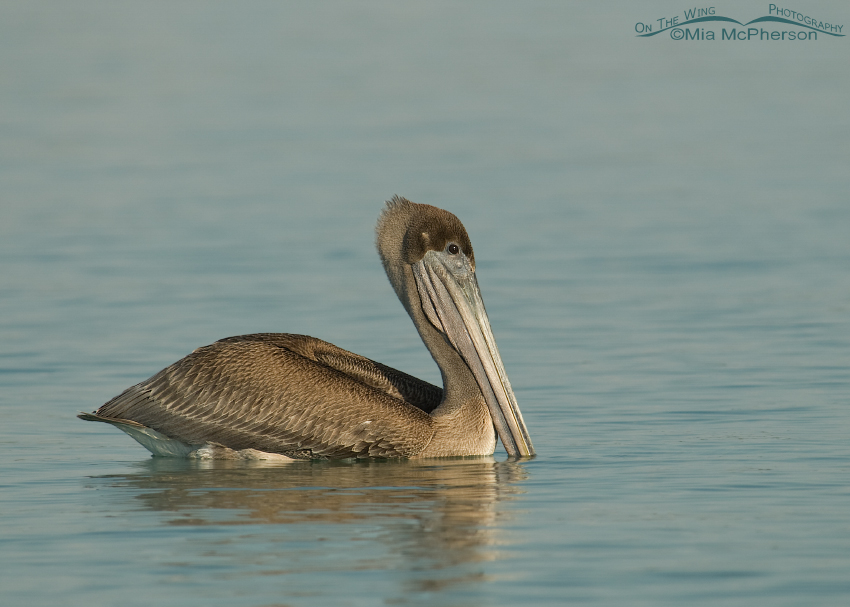 Juvenile Brown Pelican floating by – Nikon D200, f6.3, 1/750, ISO 200, Nikkor 80-400mm VR at 400mm, natural light
Juvenile Brown Pelican floating by – Nikon D200, f6.3, 1/750, ISO 200, Nikkor 80-400mm VR at 400mm, natural light
Juvenile Brown Pelicans are primarily brown, including the head and neck, the belly is a lighter creamy color. Their eyes are dark and only a little yellow shows on the bill at the age of the pelican above. The wing and back feathers have a diamond-like pattern to them.
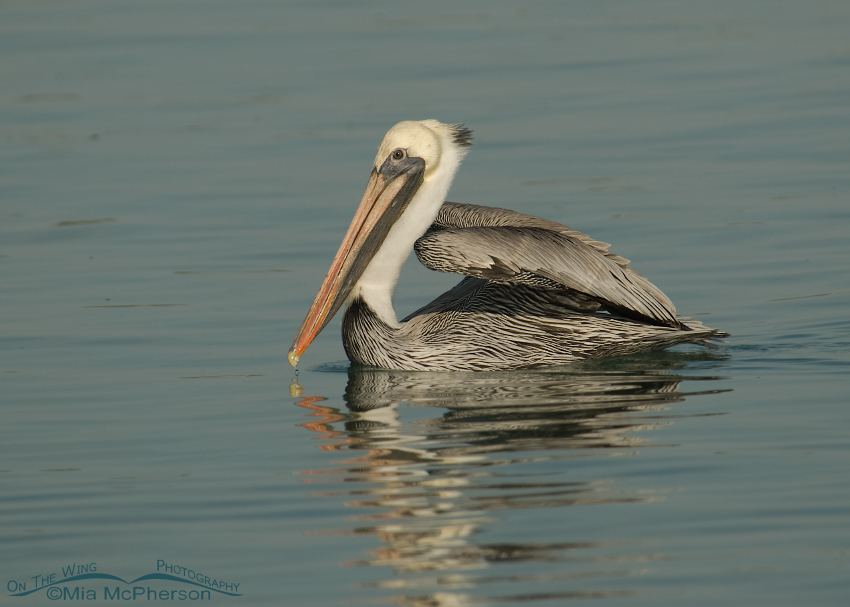 Brown Pelican adult about to lift off – Nikon D200, f6.3, 1/1000, ISO 200, Nikkor 80-400mm VR at 400mm, natural light
Brown Pelican adult about to lift off – Nikon D200, f6.3, 1/1000, ISO 200, Nikkor 80-400mm VR at 400mm, natural light
Adults have lighter back and wing feathers with an almost striped appearance on the chest and belly, the bird above is nearly in full breeding plumage. There are two subspecies in North America, the Atlantic and Pacific. The bird above is from the Atlantic subspecies. An adult in breeding plumage Pacific subspecies would show more red on the bill and the pouch.
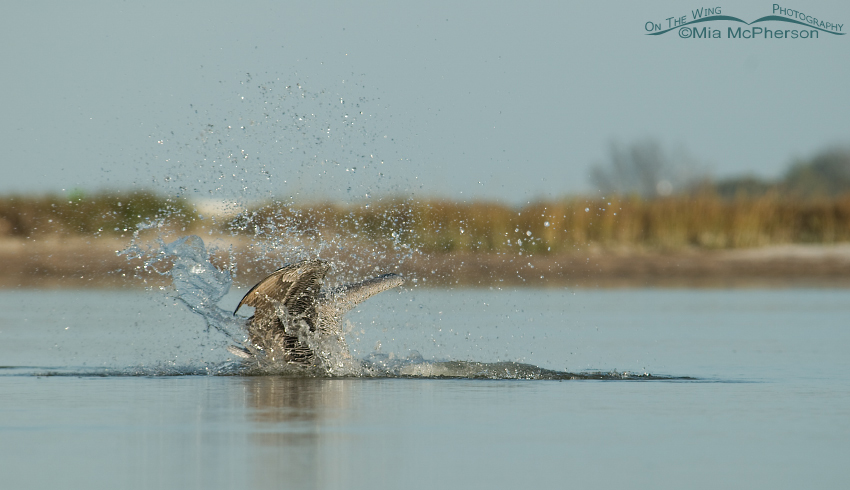 Brown Pelican splashing down into a tidal lagoon – Nikon D200, f7.1, 1/500, ISO 200, Nikkor 80-400mm VR at 400mm, natural light
Brown Pelican splashing down into a tidal lagoon – Nikon D200, f7.1, 1/500, ISO 200, Nikkor 80-400mm VR at 400mm, natural light
Brown Pelicans are fascinating, unmistakable birds to observe and photograph along the coasts of North America. I do know this; I wouldn’t want to be a fish under the brown pelican above!
Life is good.
Mia
Click here to see more of my Brown Pelican photos plus facts and information about this species.





Nice series that shows the various behaviors. I first saw brown pelicans last December at St. Andrews State Park when I went to the Emerald coast for my winter break. They are such cool birds, with interesting feather detail. I really like how you include so much interesting information with your wonderful photos!
Thanks Julie, Brown Pelicans are great fun to photograph! And you can’t miss them either!